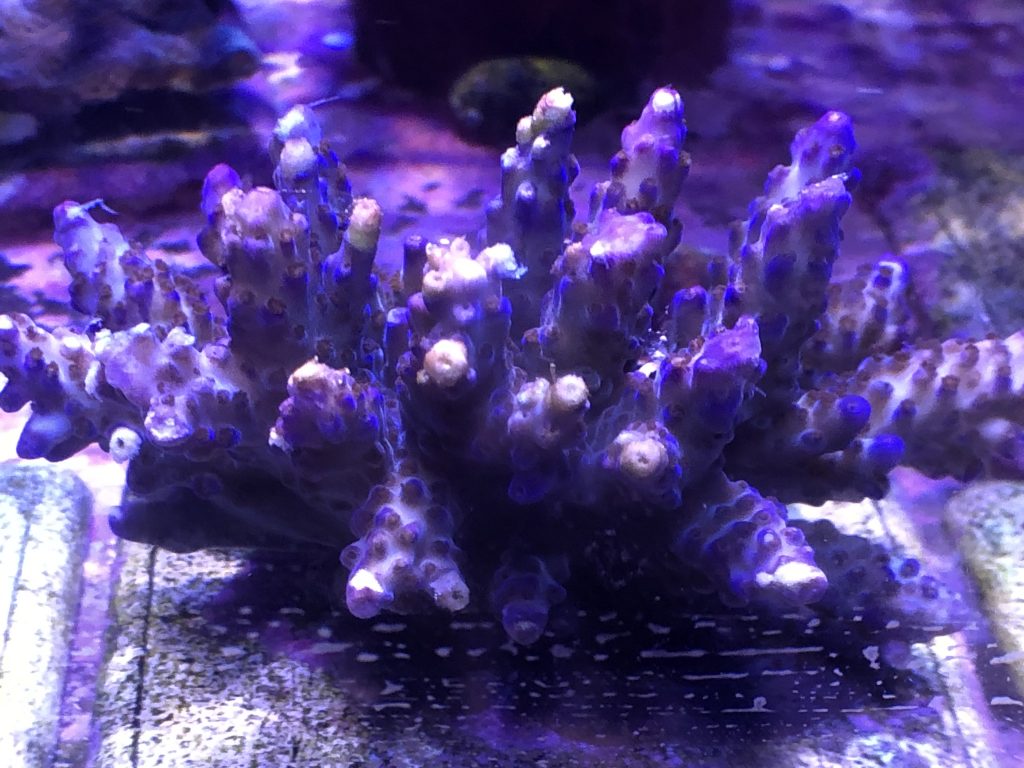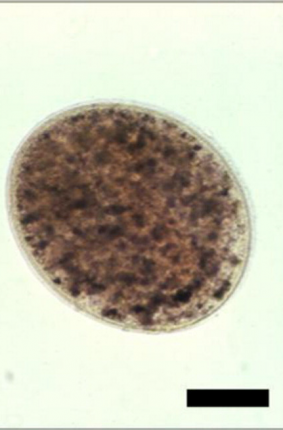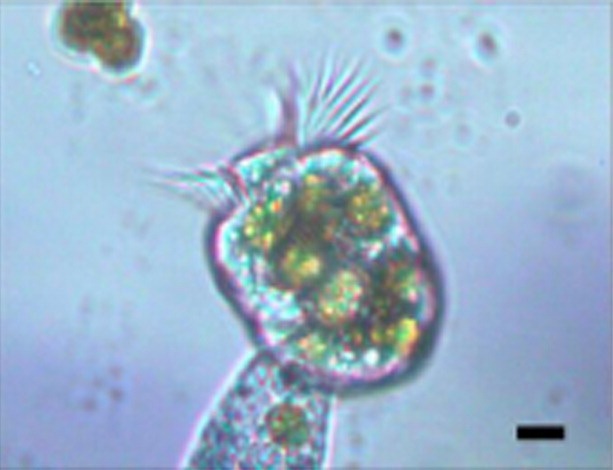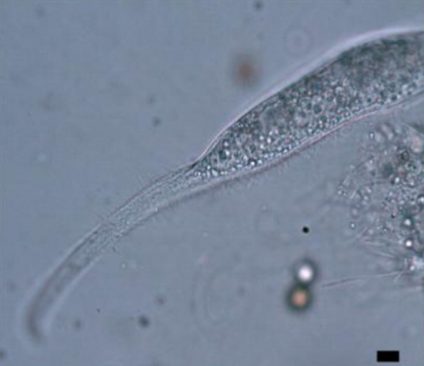STN Parasites
When a coral STN’s, you will find coral tissue loss over longer period of time. If you suspect a coral is starting to STN, follow these steps.
Below is what a typical coral looks like when a coral STN’s.

Below you will find the most common parasites when a coral STN’s.
Dysteria derouxi

Size: Variable, ranging from 75 to 110 × 30 to 50 μm.
Shape: Bilaterally flattened and when observed from the side, looks rectangular in outline, with the ventral side straight and dorsal slightly convex. The anterior margin is usually transverse truncate, and posterior region somewhat narrowed.
Color: Colorless to Grayish, usually containing many food and several ingested diatoms.
Behavior: Movement moderately rapid, usually “standing” on coral skeleton with podite slowly extending back and forth while the ciliate ‘crawls’ forward.
Cryptocaryon sp.

Size: Body ranges from 60 to 120 × 30–70 μm in vivo.
Shape: Long and oval to elongate in outline.
Color: Colorless
Behavior: Small erratic movements on the exposed skeleton, often fast when moving in a straight line.
Euplotes sp.

Size: From 90 to 140 μm long.
Shape: Body of this ciliate is slightly rectangular in outline, with no conspicuous dorsal ridges.
Color: Often dark due to food vacuoles and granules.
Behavior: Locomotion by medium-fastcrawling on coral, sometimes stationary for long periods.

Size: Variable, ranging from 60 to 70 × 50 to 60 μm
Shape: Body is oval in outline and dorso-ventrally flattened.
Color: Colorless with symbiotic algae prevalent once ingested.
Behavior: Locomotion is slow, slightly jerky, crawling on coral, remaining stationary for long periods.
Varistrombidium kielum

Size: 55 to 75 × 40 to 50 μm.
Shape: slightly asymmetric and has an elongated barrel-shaped posterior end usually with a blunt point. The collar region is clearly domed to form a conspicuous apical protrusion.
Color: colorless with the presence of symbiotic algae (green to yellow)
Behavior: present on the coral skeleton, slow moving, crawling around
Litonotus pictus

Size: body size ranges from 150 to 280 μm.
Shape: body is laterally compressed, highly elongate with anterior neck-like region which bends towards the dorsal edge.
Color: colorless
Behavior: moves in a slug-like fashion, contracting and extending the body, appears to search for food with the neck-like region
